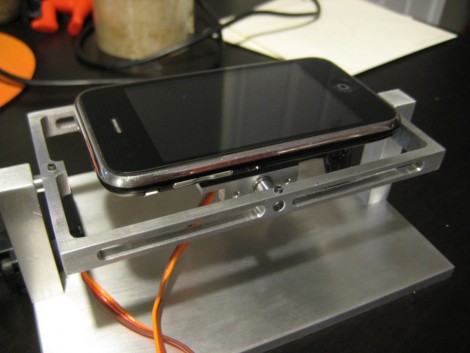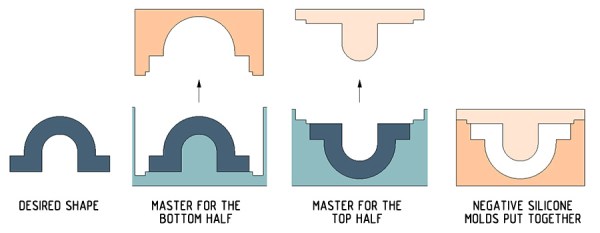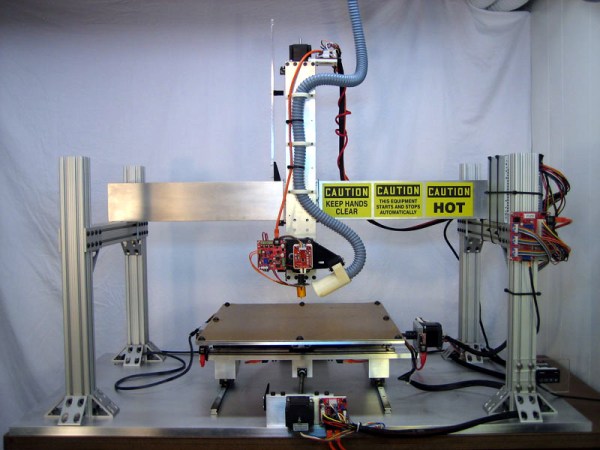Here’s a mounting system that adds mechanical tilt control to the iPhone (link dead, try the Internet Archive version). It uses two servo motors to rotate along the X and Y axes. An analog joystick is used along with an Arduino to control the movement of the apparatus. As you can see in the video after the break, this works quite well when playing accelerometer-based games. But adding a joystick isn’t the end-goal of the project. [Shane] plans to point a camera at the iPhone and use image recognition to play games automatically. That sounds like a big bite the chew but we’ve seen this work with Guitar Hero so we’re optimistic.
cnc hacks937 Articles
CNC Cake Decorator
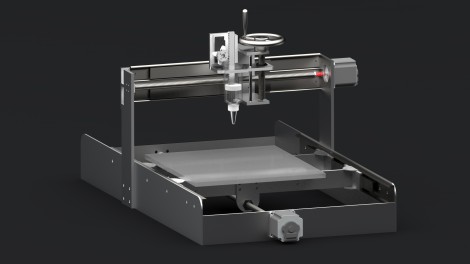
The AutoFrost CNC cake decorator is the result of a student project a Olin College of Engineering. [Tara Krishnan] and her classmates designed and built the hardware, as well as a Python interface that is used for drawing the design you want printed in frosting. The X and Y axes are controlled by stepper motors, with manual adjustments for the Z axis. The software has setting for the size of the cake, making it a bit more versatile than the last mechanized decorator we looked at. The GUI also allows for multiple colors which are applied one at a time, with the machine pausing for an operator to switch out the colored frosting container. All in all a nice build, but the next rendition should look to get rid of that second Arduino. We can’t think the code is complex enough to warrant two of them. Check out the demo video after the break.
Cobbling Together A CNC Mill

[Howard Matthews] never throws anything away, and because of it he was able to build this CNC mill using parts that he already had on hand. He pulled stepper motors out of broken stage light, precision rod and bearings from old dot matrix printers, and other various bits from his junk bin. We’ve seen [Howie’s] handi-work before, and this project is just as fun as his Land Rover’s replacement speedometer. Some highlights include manufacturing the nuts for the precision rod, and building a rail system for the bed of the machine. The latter looks a bit suspect, as any milling debris on the rails will cause you Z-axis problems, but now that he has bootstrapped a working mill perhaps he’ll machine an upgrade.
Update: Fixed the link, added video after the break.
Guerilla Guide To CNC Machining
[Ian] wrote in to tell us about the Guerilla Guide to CNC Machining and Resin Casting. He came across it in the reference links to another project and says he wish he knew about it a long time ago. We took a look and there’s a mountain of useful information in the guide, which is written by [Michal Zalewski]. We won’t pretend that we’ve read the whole thing, there’s days worth of information here. But we will. The range of topics includes types of milling machines, milling materials, software options and use, safety, and the list goes on. Bookmark this (don’t forget the second volume), it might be just the thing to get you through the holiday with your family.
Inkjet Print Head Made With A 3D Printer
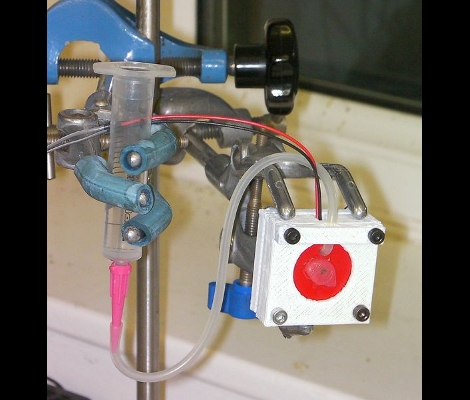
This is an inkjet print head made using a RepRap. The manufacturing process is both simple and ingenious. It uses a vibrating piezo buzzer to pump printing liquid through a tiny nozzle. The red disc seen above is exactly the same diameter as the piezo that resides behind it. There is a hole offset from the center to feed ink in between the two discs. Take a look at the test footage after the break.
To make the nozzle a hole was cut in the plastic disc, then a pin inserted and the whole thing was covered with hot glue. The next step was to remove the pin and shave down the glue until the narrow aperture is open. [Adrian Bowyer] is still in the testing phase for this assembly, but once he gets the bugs worked out he plans to test it with a heating element so that it can print using wax and other materials that are liquid when hot.
[Vik] tipped us off about this one after seeing the printable transistors from the other day.
My RepRap Is Bigger Than Yours
This 3D printer build is a thing of beauty. It prints in ABS plastic on quite a large base. The platform provides all of the X and Y movement, making the gantry stationary except for the Z axis. it is possible to print parts up to about 15″x15″ by 13″ high. The gray hose snaking down around the right side of the print head is a fume extractor, keeping the air clear around the PID controlled head, and heated base. Judging from the example items this prints with fantastic accuracy.
[via Make]
The Twelve Days Of… Self-replicating
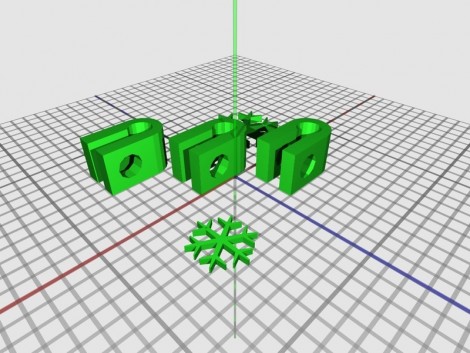
Okay, it’s more like the 23 days but who’s counting? [Kliment] is giving the gift of self-replication this holiday season by uploading one new printable part a day. If you follow along and print each one you’ll have a Prusa Mendel by Christmas (this started on 12/2 so you’ll need to catch up). The Prusa is a variation on the Mendel that uses bushings wherever possible, reducing the need for bearings down to just two.
So yeah, you need to have access to a 3D printer in order to make the parts for this 3D printer, but that’s how it always works. [Kliment] has gone the distance to make this little exercise enjoyable. The parts that take longer to print are reserved for the weekends, some have been altered to include a holiday theme, and all of them have been optimized to fit on a Makerbot build platform.
[Thanks Christopher]

